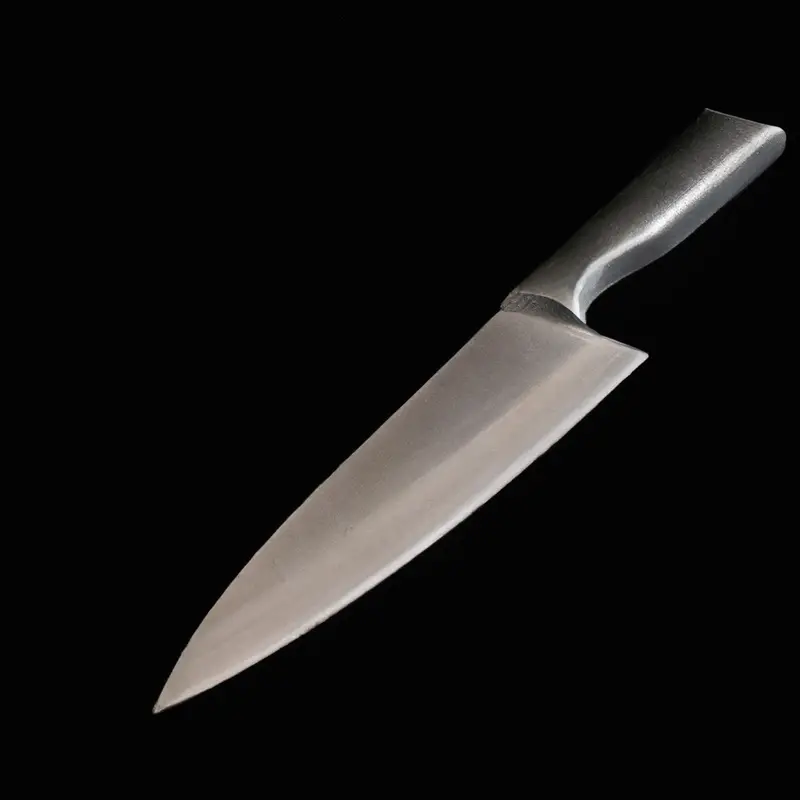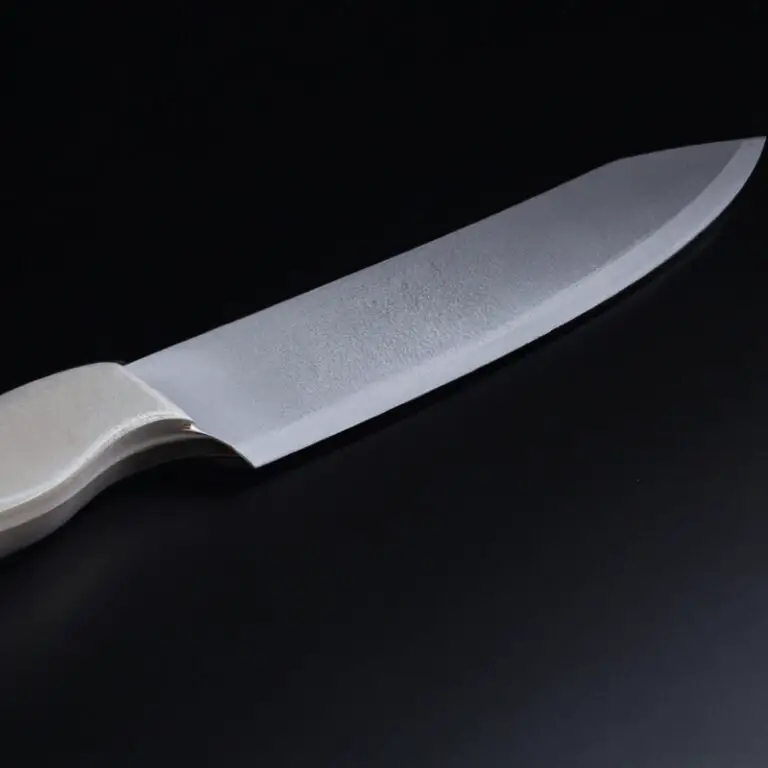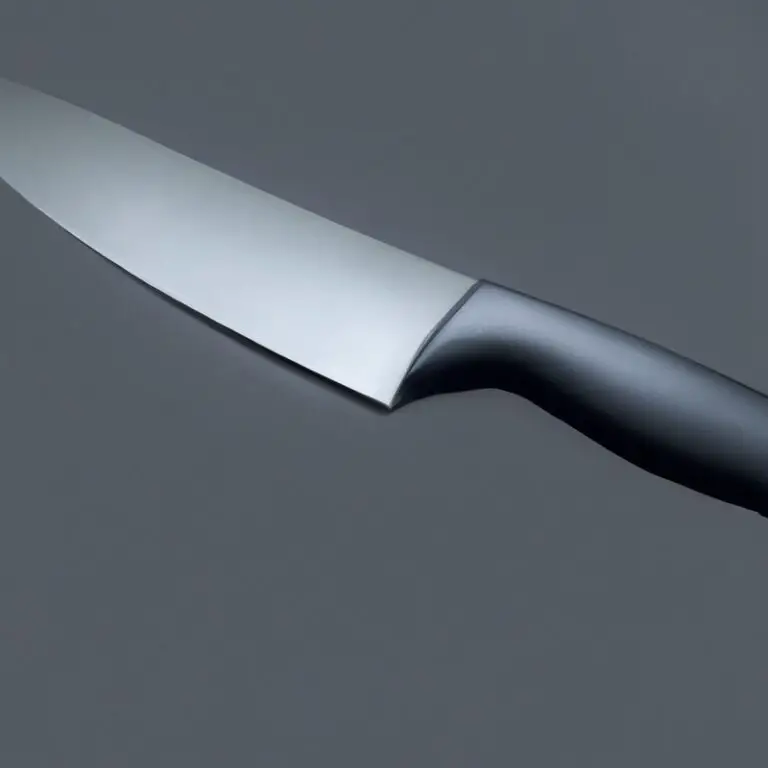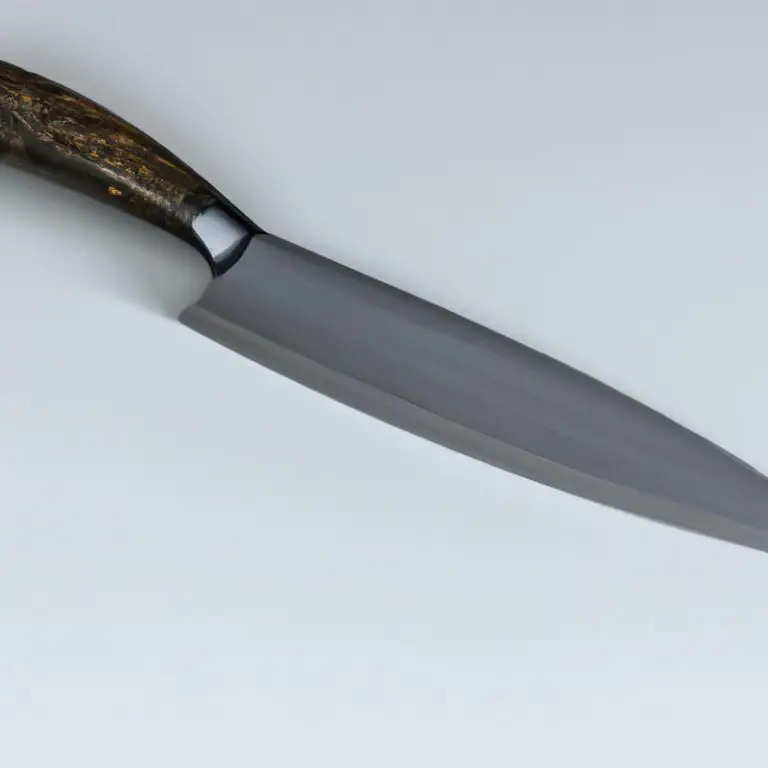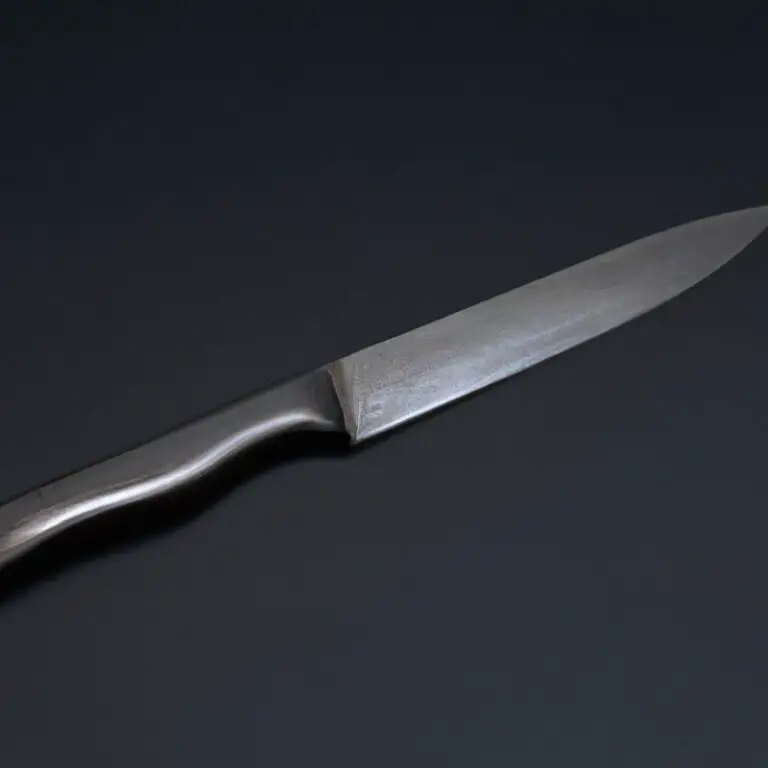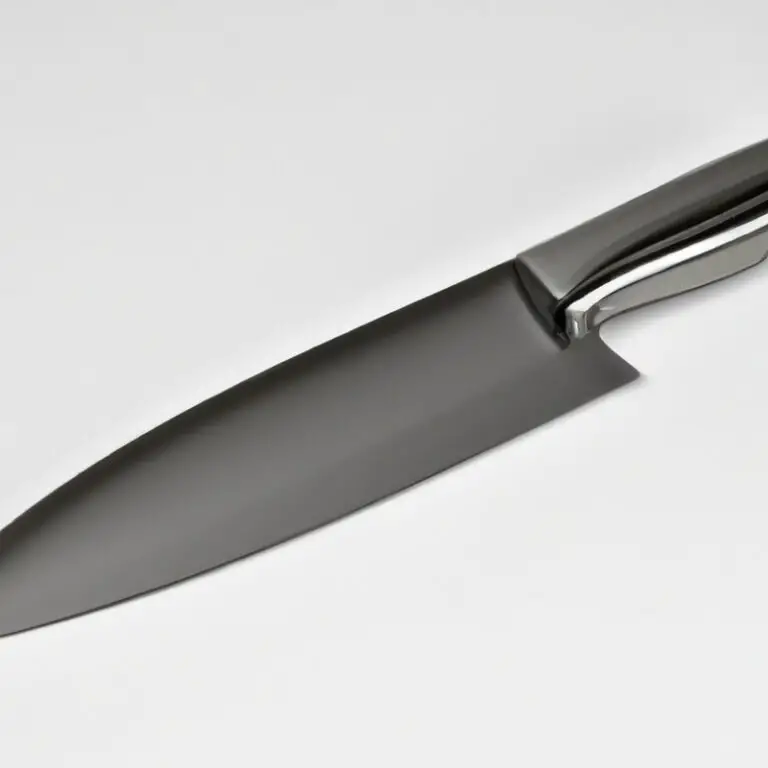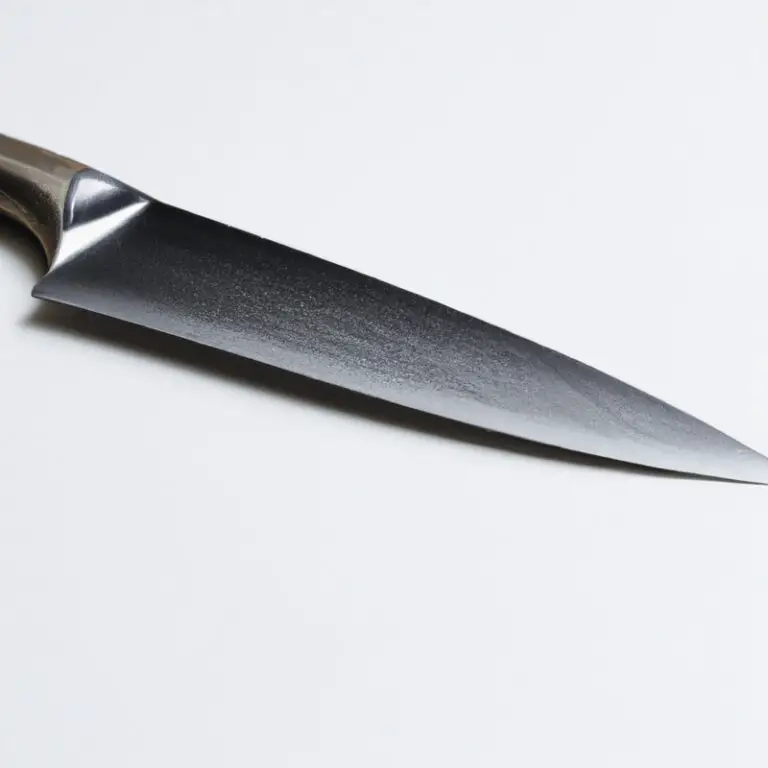How To Dice Meat With a Santoku Knife? Easily
Key Takeaways:
- Choose a high-quality Santoku knife with a sharp blade to ensure precision when dicing meat.
- Start by trimming excess fat and slicing the meat into thin, even strips before dicing.
- Utilize the rocking motion of the Santoku knife to dice the meat with ease and consistency.
- Always prioritize safety and use proper cutting techniques to avoid injury while working with sharp knives.
Do you want to take your meat dicing skills to the next level? Look no further than the Santoku knife.
This Japanese all-purpose knife has become a staple in many kitchens, particularly for its impressive dicing capabilities.
But how do you use a Santoku knife to dice meat effectively? From understanding its unique features to mastering the technique and staying safe, this guide will take you step-by-step through the process, making you a meat dicing pro in no time.
Get ready to impress your guests with perfectly diced meat every time.
| Step | Description |
|---|---|
| Step 1 | Place the meat on a cutting board and hold it steady with one hand. |
| Step 2 | Hold the Santoku knife with the other hand, using a grip that’s comfortable for you. |
| Step 3 | Starting at one end of the meat, make a downward slicing motion, using the full length of the blade. |
| Step 4 | Continue slicing the meat, repeating the downward motion, until you reach the end of the piece. |
| Step 5 | Turn the meat 90 degrees and slice across the previous cuts, creating uniform pieces of diced meat. |
What is a Santoku knife: Understanding the unique features of a Santoku knife for meat dicing
A Santoku knife is a Japanese-style knife that has a shorter and wider blade than traditional Western-style knives. It is designed for versatility in the kitchen and used often for slicing, dicing, and chopping meat, vegetables, and fruits.
The unique shape of the blade allows for a rocking motion that is ideal for meat dicing.
The edge of the blade is also sharpened at a steeper angle than Western-style knives, which makes it incredibly sharp and able to maintain its sharpness for longer. Santoku knives are lightweight and easy to maneuver, making them an excellent choice for home cooks and professional chefs alike.
If you are looking for a knife that is both versatile and efficient for dicing meat, then a Santoku knife is a great option.
Preparing the meat: The key steps to take before dicing meat with a Santoku knife
Before dicing meat with a Santoku knife, it is important to prepare the meat properly to ensure safety and optimal results. Here are some key steps to take before dicing meat with a Santoku knife:
- Defrost the meat: Make sure your meat is completely defrosted before dicing it with a Santoku knife. Partially frozen meat can be difficult to dice and can cause the knife to slip, increasing the risk of injury.
- Trim the fat: Trim any excess fat or gristle from the meat before dicing it. This will make it easier to dice and also improve the flavor and texture of the meat.
- Cut the meat into smaller pieces: It is easier to dice smaller pieces of meat with a Santoku knife. Cut the meat into manageable chunks that fit comfortably in your hand and can be easily diced.
- Remove bones: If the meat contains bones, remove them before dicing. Bones can make the meat more difficult to handle and increase the risk of injury.
By following these simple steps, you can prepare your meat properly and ensure safe and effective dicing with a Santoku knife.
Holding the knife: Proper grip and posture for effective meat dicing with a Santoku knife
To achieve effective meat dicing with a Santoku knife, it is essential to have a proper grip and posture. Hold the knife firmly with your dominant hand, ensuring that your index finger is on the blade’s spine, while your thumb rests on the knife’s flat side.
Keep your other fingers curled around the handle.
With your other hand, hold the meat firmly in place. As you make your cuts, maintain a comfortable stance and keep your back straight.
Remember to use your wrist to guide the knife’s movements and avoid placing too much pressure on the blade.
Regular practice will help you develop muscle memory, making it easier to dice meat with a Santoku knife.
Choosing the right cutting board: Factors to consider when selecting a cutting board for dicing meat
Choosing the right cutting board is crucial when dicing meat with a Santoku knife. Here are some factors to consider:
- Material: Cutting boards can be made of various materials such as wood, plastic, bamboo, and composite. Plastic and composite boards are preferred for meat dicing as they are easier to clean and sanitize.
- Size: The size of the cutting board depends on the quantity of meat being diced. A larger board provides more space to work with, while a smaller board is easier to handle.
- Thickness: A cutting board that is too thin can warp or crack easily, while a board that is too thick can be heavy and difficult to move around. A thickness between 1/2 and 1 inch is ideal.
- Surface: The surface of the cutting board should be flat and even. A textured cutting board can damage the blade of the knife and make it difficult to dice meat uniformly.
- Sanitization: Cutting boards can harbor harmful bacteria if not cleaned properly. Choose a cutting board that is dishwasher safe or can be easily cleaned with soap and water.
By considering these factors, you can choose the right cutting board for dicing meat with a Santoku knife. Remember to sanitize your cutting board after each use to avoid contamination.
The dicing technique: Mastering the art of dicing meat with a Santoku knife using the right technique
The dicing technique involves understanding the anatomy of the meat and precise cutting movements with a sharp Santoku knife. To start, ensure that the meat is evenly cut into flat, uniform pieces for easier dicing.
Hold the knife with a steady grip and use the unique Granton edge of the Santoku knife to reduce sticking.
Begin by making straight downward cuts and then turn the meat 90 degrees to make horizontal cuts, creating evenly sized cubes. Practice and patience are key to mastering the dicing technique.
Avoid excessive force and jagged cuts, which can result in uneven meat cubes and potential injury.
Remember always to use your Santoku knife with caution and prioritize safety precautions while dicing meat.
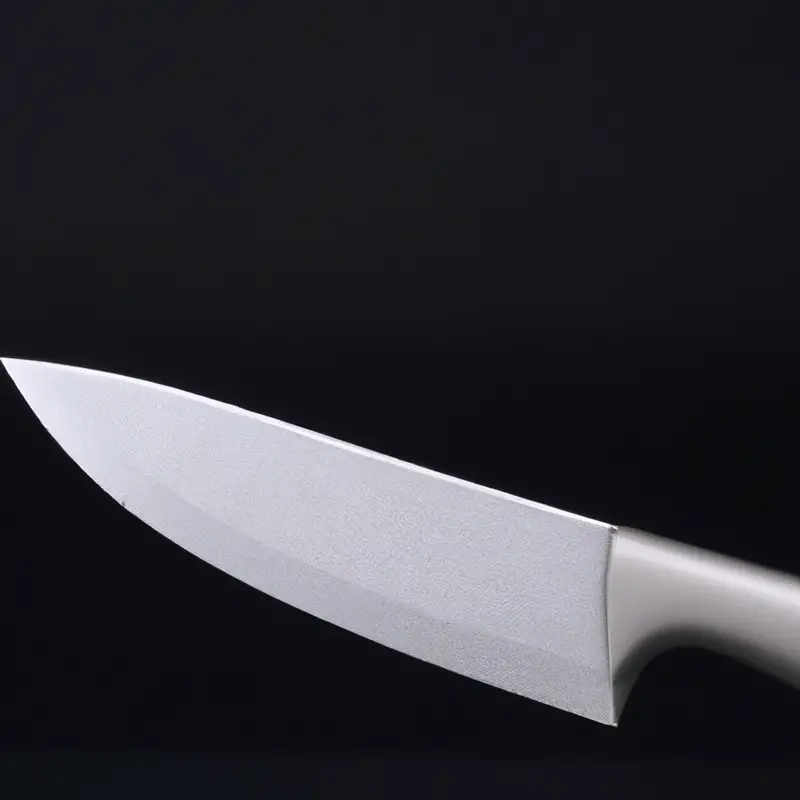
Safety precautions: Tips for staying safe when dicing meat with a sharp Santoku knife
Safety is of utmost importance when it comes to dicing meat with a sharp Santoku knife. Here are some crucial tips to consider:
- Keep your cutting area clean and dry to avoid slipping.
- Always use a cutting board that is stable and won’t move around during use.
- Hold the Santoku knife with a firm grip and avoid using excessive force.
- Make sure to lift your fingers carefully and maintain a safe distance from the blade while dicing the meat.
- Be mindful of the way you position and move your free hand.
By following these safety precautions, you’ll have a safer and more enjoyable experience while dicing meat with a sharp Santoku knife. Remember to always remain alert, focused, and aware of your surroundings.
Cleaning and maintaining the Santoku knife: Proper care and maintenance to ensure your knife lasts longer
To ensure your Santoku knife retains its sharpness and lasts longer, proper care and maintenance are crucial. Here are some tips to keep your Santoku knife in top condition:
- Hand wash your knife with soap and warm water immediately after use. Never leave your knife in the sink, as it can get damaged or cause injury.
- Dry your knife immediately with a towel to prevent rust and water spots. Avoid air drying your knife, as it can leave water marks.
- Store your Santoku knife in a knife block or magnetic strip. Never store it loosely in a drawer, as it can damage the blade.
- Avoid cutting bones or frozen food with your Santoku knife, as it can cause the blade to chip. Instead, use a sturdier knife designed for these purposes.
- Regularly sharpen your Santoku knife using a sharpening stone or a honing rod to maintain its sharpness.
By following these simple tips, your Santoku knife will stay sharp and last longer.
Dicing different types of meat: How to dice various types of meat including beef, poultry, fish, and more with a Santoku knife
Dicing meat with a Santoku knife requires a different approach depending on the type of meat you’re working with. When dicing beef, it’s best to start by cutting against the grain, which helps to tenderize the meat.
Poultry should be diced into smaller pieces to ensure even cooking and discourage the growth of harmful bacteria.
When it comes to fish, a sharp Santoku knife is crucial for precision and avoiding crushing delicate flesh. Other types of meat that can be effectively diced with a Santoku knife include lamb, pork, and game meats.
It’s essential to always use a sharp knife to ensure clean, precise cuts and to avoid applying too much pressure, which can result in tearing or crushing of the meat.
When dicing meat, it’s crucial to keep your fingers and other body parts safely away from the blade to avoid injury. With the right technique and precautions, utilizing a Santoku knife can lead to perfectly diced meat ready for your best dishes.
How to sharpen a Santoku knife: Step by step guide to sharpening your Santoku knife for effective meat dicing
To sharpen your Santoku knife for effective meat dicing, you’ll need a sharpening stone, honing steel, or an electric knife sharpener. Follow these simple steps:
- Check the blade: Before you sharpen your knife, check for any nicks or bends. If the blade is bent, it’s best to take it to a professional for repairs.
- Prepare the stone: If using a sharpening stone, moisten it with water or oil as instructed by the manufacturer.
- Angle the blade: Hold the blade of your knife at a 15 to 20-degree angle against the stone or sharpening tool.
- Sharpen the blade: Move the blade back and forth over the stone or tool, applying pressure and maintaining the angle. Repeat on the other side of the blade.
- Hone the blade: Finish the sharpening process by using a honing steel to realign any microscopic burrs on the blade.
- Test the sharpness: Test the sharpness of the blade by slicing a piece of paper or tomato. If it cuts easily without crushing or tearing, your knife is sharp.
Regular sharpening and honing are essential to maintain the blade’s sharpness and dexterity. A dull blade can be dangerous and hinder your ability to dice meat effectively.
It’s recommended to sharpen your Santoku knife at least once every three months.
Common mistakes to avoid: A guide to the common mistakes that people make when dicing meat with a Santoku knife and how to avoid them
When using a Santoku knife to dice meat, there are common mistakes that many people tend to make. These mistakes can affect the quality of the meat pieces and also pose safety risks.
To achieve the best results with your Santoku knife, avoid these common mistakes:
- Using dull knives
- Not allowing enough space on the cutting board
- Cutting through bones
- Using a poor grip
- Using the wrong technique
To avoid these mistakes, ensure that your knife is sharp, make sure your cutting board accommodates the size of the meat, avoid cutting through bones, use a proper grip, and practice the correct dicing technique. By avoiding these common mistakes, you will have a much easier and safer time dicing meat with your Santoku knife.
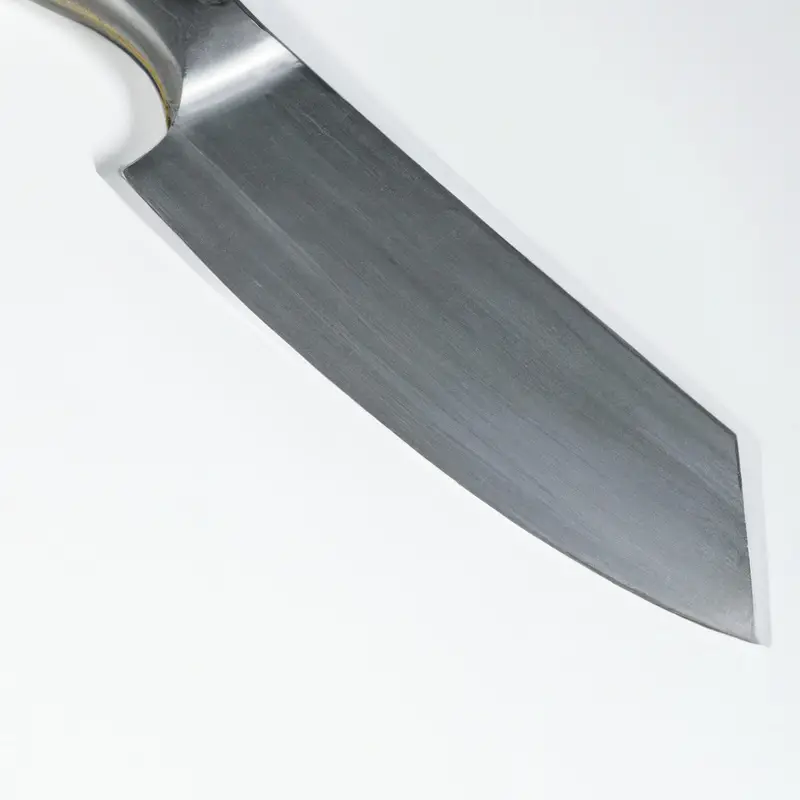
Final Verdict
Dicing meat with a Santoku knife can be a game-changer for all your culinary needs. By understanding the unique features of a Santoku knife, preparing the meat correctly, and mastering the dicing technique, you can easily dice different types of meat with precision and ease.
However, it is crucial to take the necessary safety precautions and maintain the knife properly to ensure its longevity and effectiveness.
With these tips and guidelines, you are now equipped to dice meat like a pro with your Santoku knife. Trust in the information presented here and take action to become a master of dicing meat.
Happy cooking!

